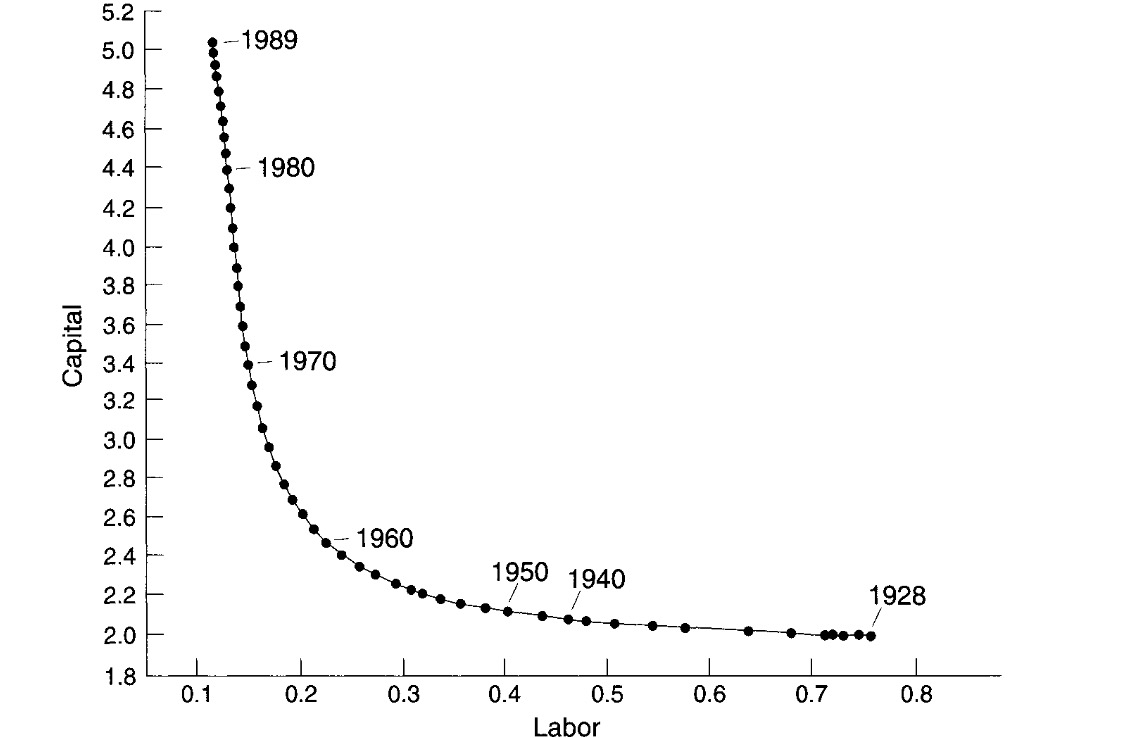02.05.2024 Ende der Sowjetunion#
Ch. 10 After Stalin#
WW: loss of pop and GDP
after 2WW - 1980
exceptional growth capital stocl
big increase employment
some expansion cultivated acreage
after 1980 = slowdown
classical explanation = extensive growht / intensive growth
institutions not made for efficient combination of output
system was good for shifting of underused labor surplus
after full employment = useless
Weitzman Analysis#
Soviet Model = Cobb Douglas with elasticity of substitution = 0.4 (not one as normal)
missing technological growth = no longer problem
but shrinking labor supply
rapid growth => abrupt slowdown

Soviet Union Isoquant Figure:
in 1928: 1% more capital = 0.97 more output (=capital constrained)
in 1960 = labor and capital both efficient
in 1980: 1% more labor = 0.8% more output (=labor constrained)
with better elasticity of substitution = grwoth would go on (similar to Japan)
Allen analysis#
not EOS problem, but investment
Reconstruction Investment
e.g refitting old factories
high input needed
less output growth
wasteful
Politcal Reasons for reconstruction investment
employment protection
provision of housing was trough employer
believe to be more economic
Resource Depletion
1970s: western russian resources depleted
shift to siberia = wasteful + espensive
resource course
example: energy (coal)
coal in west (donezk) depelted
shift to siberia = more expensive
solution would have been trade
but focus in self-suffiency in SU
no conservation of energy
soft budget constraint = not rising prices
lacking monitoring
no agreement
no politicaln will for long run investment
poor incentives => not efficient resource use
Technology
classical analysis: conservative towards new technology
no in house research, but in institutes
benefits of technology = only to consumers, not enterprises
output target = no incetinve to innovate
Allen analyisis
significant research on site (ex. cement industry)
external factor = arms race
reallocation to military sector (esp. R&D)
military-industrial secotr = take all bright heads
plans did not make sense generally
=> market driven technological change needed
not one person has to solve problems (like Gorbachev)
but the market in general